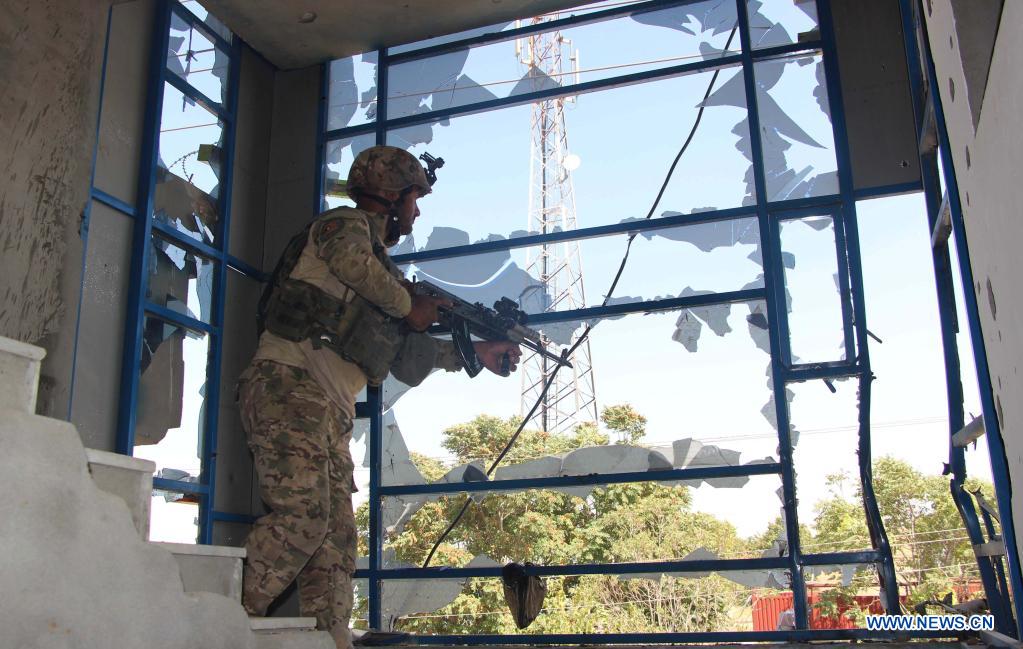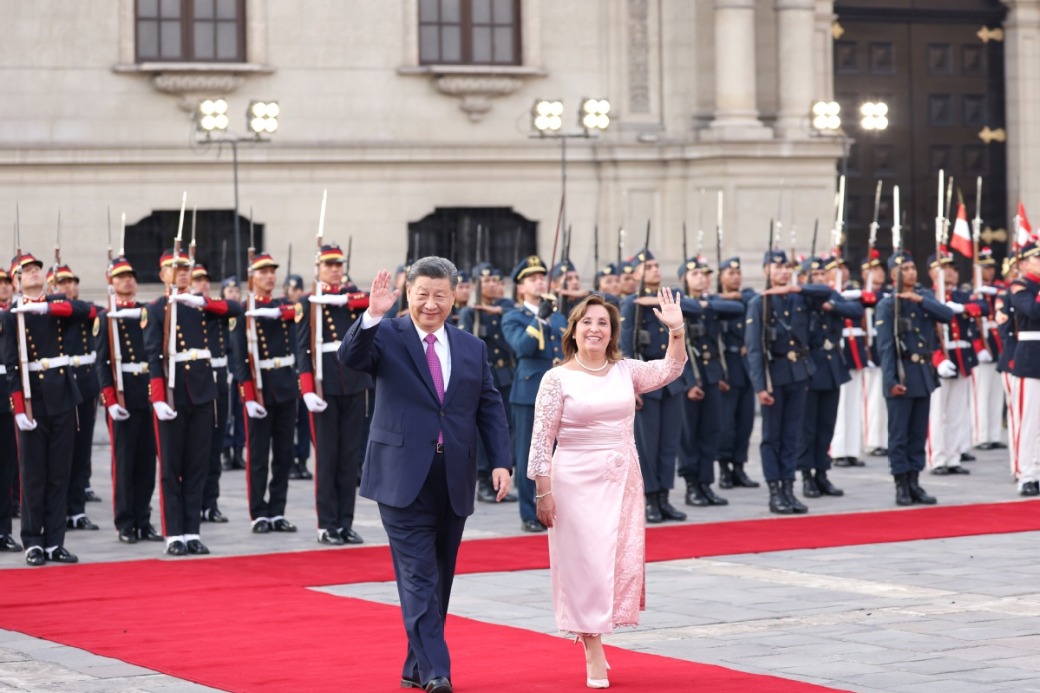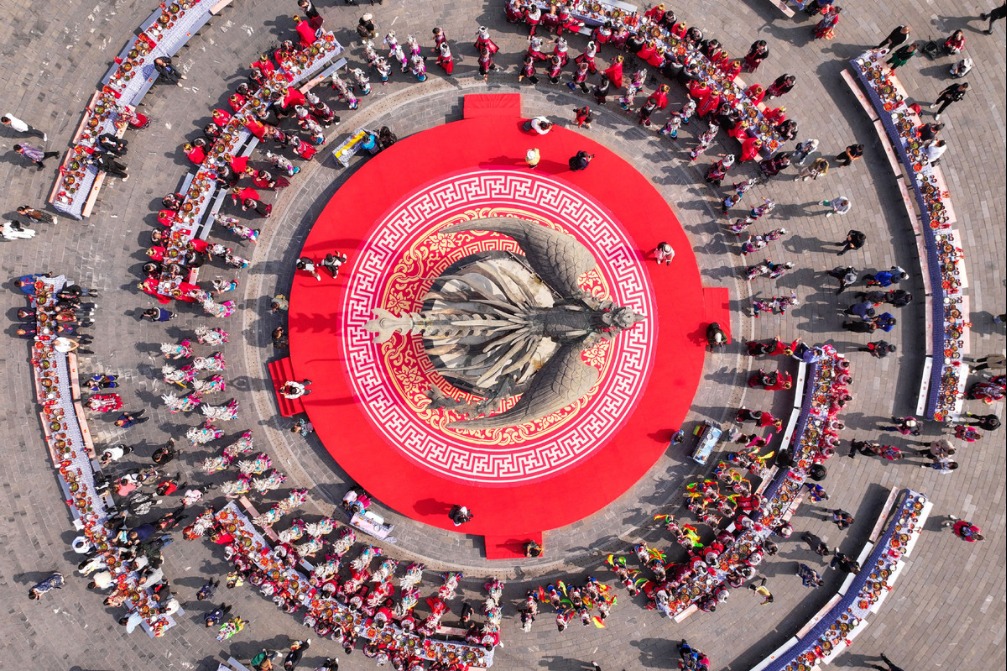Afghan casualties rise as US pulls out
By HENG WEILI in New York | China Daily Global | Updated: 2021-07-27 10:27

Fighting in Afghanistan is taking a record toll on children and women, according to a report released Monday by the United Nations, as US and NATO troops continue their planned Aug 31 withdrawal from the country.
More children and women were killed and wounded in the mountainous Asian country in the first half of 2021 than in the first six months of any year since the UN began keeping track in 2009, the report said.
Afghanistan has suffered the casualties during the ongoing withdrawal of the US military. American forces have been stationed in the country since 2001, following the terrorist attacks of Sept 11 that year. They and some NATO troops are expected to leave within the next month, as their withdrawal is more than 95 percent complete.
The Taliban has stepped into the void, as they attempt to seize control of the country from a weakened Afghan military.
As a result, the US has temporarily stepped up its bombing campaign against the Taliban.
In an editorial published on its website Monday, The Wall Street Journal said US President Joe Biden may want to reconsider the timetable for the withdrawal.
"Mr. Biden needs to adapt his withdrawal plan or risk a catastrophe that will mar his Presidency," the editorial said. "Mr. Biden's Afghan withdrawal is popular now — bringing troops home usually is — but it won't look good if the Taliban roll over Kabul and chaos ensues. Donald Trump may have set the withdrawal in motion, but since when did Mr. Biden follow his predecessor's lead? The rout will be on Mr. Biden's watch."
Former US president George W. Bush, who made the decision to send US forces to Afghanistan two decades ago before pivoting to Iraq two years later, said earlier this month that the troop withdrawal was a mistake.
"I'm afraid Afghan women and girls are going to suffer unspeakable harm," he said in an interview with German broadcaster Deutsche Welle, adding that he was also concerned for translators and others who helped the foreign forces. "They're just going to be left behind to be slaughtered by these very brutal people, and it breaks my heart."
The war-ravaged country suffered a 47 percent increase in the number of all civilians killed and wounded in the first six months of the year compared with the same period last year, according to the report from the UN Assistance Mission in Afghanistan (UNAMA).
In the midyear update, 1,659 civilians were reported killed and 3,254 wounded, an increase of 47 percent over the same period last year.
Thirty-two percent were children — 468 killed and 1,214 wounded. Fourteen percent of civilian casualties were women, as 219 were killed and 508 wounded, the report said.
"I implore the Taliban and Afghan leaders to take heed of the conflict's grim and chilling trajectory and its devastating impact on civilians. The report provides a clear warning that unprecedented numbers of Afghan civilians will perish and be maimed this year if the increasing violence is not stemmed," said Deborah Lyons, the UN secretary-general's special representative for Afghanistan.
The Taliban, which last month touted a manifest victory and triumph" in a statement, said the withdrawal "will be the beginning of the end of the ills birthed by occupation".
They refer to themselves as the Islamic Emirate of Afghanistan, a Sunni Islamist movement following Deobandi Revivalist teachings. They have captured significant territory in recent weeks, seized strategic border crossings with several neighboring countries and are threatening a number of provincial capitals.
The Taliban have said there won't be peace in Afghanistan until there is a new negotiated government in the capital Kabul, and President Ashraf Ghani is removed from office.
"Intensify your efforts at the negotiating table," Lyons said of the two sides. "Stop the Afghan-against-Afghan fighting."
The report said that "the pursuit of a military solution will only increase the suffering of the Afghan people".
The UN report blames anti-government forces for 64 percent of all civilian casualties, with 39 percent inflicted by the Taliban, nearly 9 percent by the Islamic State group and 16 percent undetermined.
Afghan security forces were responsible for 23 percent of civilian casualties, and pro-government armed groups for 2 percent.
A May 8 attack outside the Sayed ul-Shuhuda school in Kabul caused more than 300 civilian casualties, mostly girls, and 85 deaths.
According to the report, the main cause of civilian casualties was improvised explosive devices, followed by fighting on the ground and targeted killings.
Much of the battlefield action during the most deadly months of May and June took place outside cities, in areas with comparatively low population levels. The UN is "gravely concerned that if intensive military action is undertaken in urban areas with high population densities, the consequences for Afghan civilians could be catastrophic", the report said.
The UN report said that the parties involved in the fighting have an obligation under international law to protect civilians, most recently expressed in a joint statement issued on July 18 by representatives of the Islamic Republic of Afghanistan and the Taliban in Doha, Qatar.
"It is sickening to report that more women and more children were killed and injured than ever before recorded by UNAMA for the first half of any calendar year," the report said.
The report also said it was "noteworthy" that it is the first time since 2009 that no civilian casualties were attributed to international military forces.
The leading causes of civilian casualties "were the extensive use of improvised explosive devices (IEDs) by AGEs (anti-government elements), ground engagements between parties, targeted killings by AGEs, and air strikes by the Afghan Air Force".
The use of pressure-plate IEDs, nearly all by the Taliban, resulted in 42 percent more civilian casualties than during the same period in 2020. Such weapons, which can go off even by a child stepping on them, "may violate international humanitarian law and UNAMA reiterates its call on the Taliban to permanently ban the use of these indiscriminate devices".
Ground engagements caused 33 percent of civilian casualties, with nearly all of these civilian casualties attributed to the Taliban and Afghan national security forces. Civilian casualties from ground engagements increased by 41 percent compared with the first six months of 2020.
Targeted killings by AGEs were the third leading cause, responsible for 14 percent of all civilian casualties. Airstrikes, attributable to the Afghan Air Force, accounted for 8 percent of civilian casualties, according to the report.
"UNAMA remains deeply concerned about the continuation of AGE attacks deliberately targeting civilians, particularly through the use of IEDs and shootings, including targeting of civilian government workers, human rights defenders, media workers, religious elders, and humanitarian workers, and sectarian-motivated attacks."
The Associated Press contributed to this story.
























